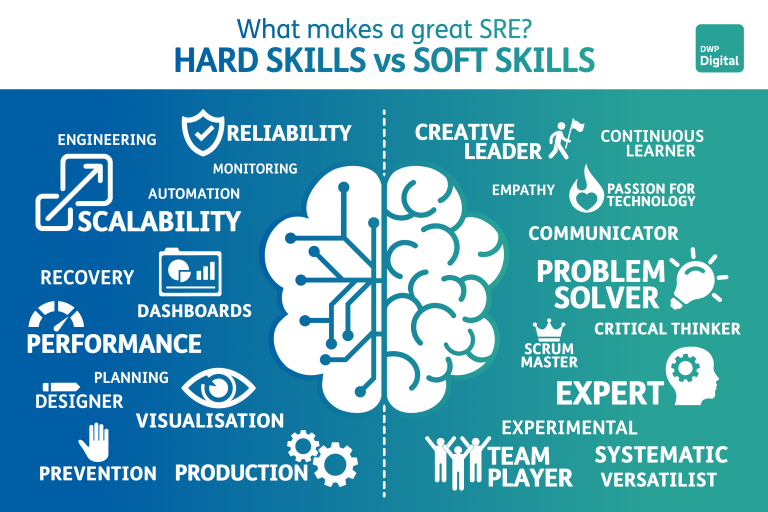Disrupt Or Be Disrupted In Digital Business Transformation

The digital-first economy is like a treadmill that keeps getting faster and faster. If you don’t keep up, you fall. The collapse of the video-rental service provider Blockbuster serves as a cautionary tale of exactly this. Blockbuster was once to movies what McDonald’s is to fast food. It was once a global empire in its field, with more than 9,000 branches internationally but is now a faded memory, having closed its remaining stores permanently in 2014.
Why Your Business Needs Site Reliability Engineering

In the age of digital services, system reliability is paramount. Conglomerates like Amazon deal with millions of online business transactions 24/7 and even a momentary system failure could cost them billions. Real-time customer expectations and the need for zero downtime have pushed the need for systems that are not just functioning, but also highly available and scalable. With so much money and data at stake, neither businesses nor customers can afford disruption to their online business exchanges. So how do we prevent, minimise, and resolve these errors? This is where Site Reliability Engineering comes into the equation.
Site Reliability Engineering is a discipline that combines software engineering and operations to build, deploy, monitor, and maintain systems that are both highly reliable and scalable. SRE teams are responsible for ensuring that systems are meeting availability SLAs, while also constantly improving performance and efficiency. To do this, they utilise a combination of code development, automation, and logging/monitoring tools. In addition, SRE teams often work closely with other engineering teams to develop new features and products in a way that doesn’t sacrifice reliability.
By utilising Site Reliability Engineering principles, businesses can build systems that are more reliable and responsive to customer needs.
SRE vs. DevOps – What’s the Difference?

The terms ‘DevOps’ and ‘SRE’ are often used interchangeably, with SRE methods and techniques accompanying DevOps culture and practices, though there are several key differences.
The term ‘DevOps’ is short for ‘development and operations’, and it refers to the culture and practices of collaboration between software developers and IT operations professionals. The goal of DevOps is to shorten the software development life cycle and increase the frequency and quality of software releases. ‘SRE’, on the other hand, stands for ‘site reliability engineering’. SRE is a set of practices and principles for achieving operational excellence with cloud-based services.
SRE teams work to ensure that DevOps procedures create quality software and meet operational Service Level Objectives (SLOs).
SREs typically have a background in operations and software development, while DevOps teams can include QA experts, developers, engineers, and SREs.
While both DevOps and SRE are concerned with improving the quality and speed of software development, they are distinct approaches with different goals.
Your 2022 Guide to Marketing Automation
As marketing experts, we are often asked for the best advice on practices and techniques. To help you make the most of your marketing in 2022, we created this guide to Marketing Automation.
In the guide, we share our experience, opinions, tips and suggestions based on our years of experience. We also look at key trends in marketing automation. In terms of specific functionality, we will refer to our Marketing Automation platform but even if you are not (yet!) using that, the information should still be relevant, particularly if you are using or considering using it – or considering another Marketing Automation platform.
With a highly experienced and engaged team and over 20 years’ worth of sales and marketing industry expertise, we have worked for, created, influenced and driven market leading organisations, platforms and tools. Because of this, we have helped a wide variety of clients to achieve great results using marketing automation.
We work closely with each of our clients to understand their businesses, aims, challenges and what matters to them, providing a personalised service that includes consultation, training and support.
Technology Priorities for 2022 – Part One

Technology Priorities for 2022 – Part One Over the last couple of years, organisations and individuals have shown remarkable resilience and ability to adapt to unprecedented change and upheaval. Some have thrived. Many have demonstrated great ability and determination to cope with massive disruption and to rapidly transform, innovate and seek out alternative ways of […]
Technology Priorities for 2022 – Part Two

Technology Priorities for 2022 – Part Two In our last article we looked at the first 5 of our Top 10 technology priorities for 2022. We talked about composability and how organisations who quickly adopted digital business transformation, found themselves in stronger positions to adapt, survive and in some cases very much thrive despite the […]
Delivering Value in 2022

Delivering Value in 2022 What to Expect in 2022 2021 saw the start of recovery and renewed focus as well as adaption, change and growth. Despite short term cuts and postponed plans, organisations as a whole still increased their technology spend, focusing their attentions on enabling remote working and customer servicing, reducing on-premises costs and […]
Time to Thrive

2022 – Time to Thrive Opportunities & Growth in the New Normal Over the last couple of years, we’ve seen much economic uncertainty, turbulence and change as households, companies, industries, governments and entire countries, grappled with the impact of the global pandemic. From rising unemployment and the shut down of economies to reduced GDP and […]